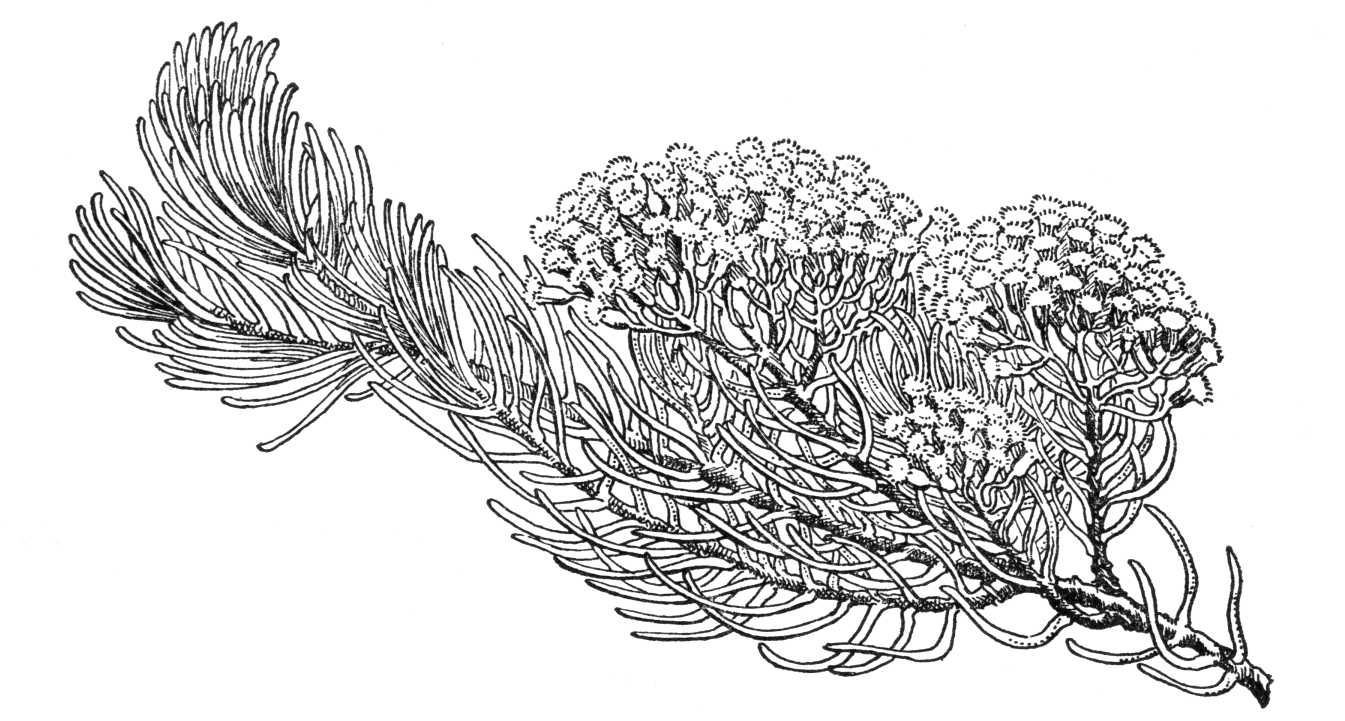Ozothamnus rosmarinifolius
Credits
Article from Bean's Trees and Shrubs Hardy in the British Isles
Recommended citation
'Ozothamnus rosmarinifolius' from the website Trees and Shrubs Online (treesandshrubsonline.
Genus
Synonyms
- Helichrysum rosmarinifolium (Labill.) Steud. ex Benth.
- Helichrysum purpurascens Hort., in part, not (DC). W. M. Curtis
- H. rosmarinifolium var. purpurascens Hort.
Infraspecifics
An evergreen shrub 3 to 10 ft high, with slender erect branches, more or less woolly when young. Leaves crowded, linear, mucronate, with closely revolute margins, 1⁄2 to 11⁄2 in. long, up to 1⁄12 in. wide, rough on the upper surface with small projecting points (muricate), woolly beneath. Flower-heads numerous in dense corymbs at the ends of the main and upper lateral branches. Involucral bracts sparsely hairy, light brown with usually a marked crimson-red tinge, especially in bud, the inner with small white radiating tips; florets five to seven.
Native of New South Wales, Victoria, and Tasmania, on wet peaty heaths and along watercourses; seeds were collected by H. Comber during his expedition to Tasmania in 1929–30, but it may have been introduced earlier. Although not reliably hardy, it should survive most winters and has grown for many years in sunny positions at Wakehurst Place in Sussex. Its most striking feature is the rich red colouration of the involucral bracts as the inflorescences begin to expand around midsummer. Award of Merit June 18, 1968, when exhibited by Lord Talbot de Malahide.
O. rosmarinifolius has been confused with the more tender O. purpurascens, which differs in being strongly aromatic, with much shorter leaves (rarely much more than 1⁄2 in. long), with a smooth upper surface. It should also be pointed out that until recently the name Ozothamnus rosmarinifolius or Helichrysum rosmarinifolium was used in gardens for the species properly known as O. thyrsoideus.
O diosmifolius (Vent.) DC.
Synonyms
Helichrysum diosmifolium (Vent.) Sweet


